Popular games for franchise Space Invaders
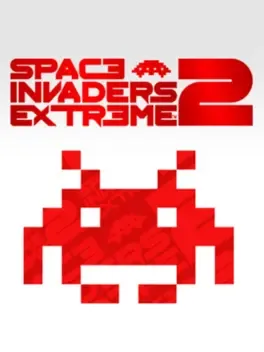
High-speed action-packed game play returns with the addition of exciting head-to-head battle modes, a challenging new time attack mode, and expanded game play progression that goes beyond Fever Time to SUPER FEVER TIME! Space Invaders Extreme 2 - faster and more exhilarating than ever before!
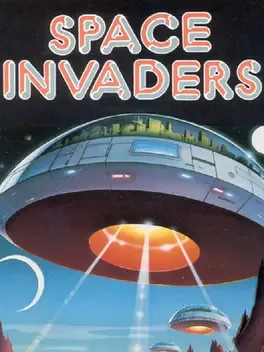
Space Invaders is an arcade video game developed by Tomohiro Nishikado and released in 1978. It is one of the earliest shooting games and the aim is to defeat waves of aliens with a laser cannon to earn as many points as possible.
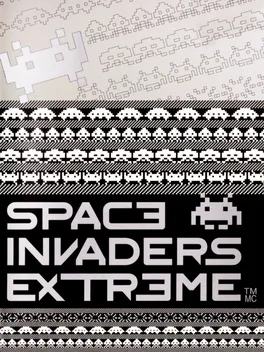
Space Invaders Extreme combines the captivating essence of the original game with a stunning alliance of futuristic graphic design and cutting-edge audio. The gameplay experience has been developed to maximise on the consoles' abilities, offering players a whole new range of amazing features including a vast array of new power-ups.
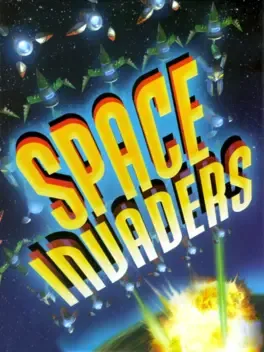
Space Invaders is a game in which the player controls a laser cannon by moving it horizontally across the bottom of the screen and firing at descending aliens. The aim is to defeat five rows of eleven aliens—some versions feature different numbers—that move horizontally back and forth across the screen as they advance towards the bottom of the screen. The player defeats an alien, and earns points, by shooting it with the laser cannon. As more aliens are defeated, the aliens' movement and the game's music both speed up.
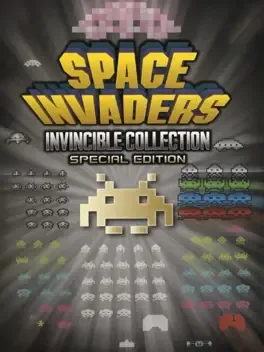
A larger collection of Space Invader games released as a Special Edition in Japan with various physical items. Game collection planned for release by Strictly Limited Games in Europe. This collection contains: - Space Invaders (1978, Arcade, Original) - Space Invaders (1978, Arcade, Color) - Space Invaders Deluxe (1979, Arcade) - Majestic Twelve: The Space Invaders Part IV (1990, Arcade) - Super Space Invaders ’91 (1990, Arcade, Majestic Twelve Overseas Version) - Space Invaders Extreme (2018) - Space Invaders Gigamax 4 SE (2018) - Arkanoid vs Space Invaders (2016, As Free DLC in Japan) - Space Invaders DX (1994, Arcade) - Space Cyclone (1980, Arcade) - Lunar Rescue (1979, Arcade)
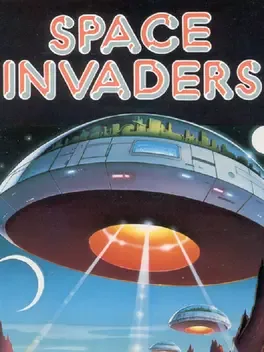
Space Invaders is a game in which the player controls a laser cannon by moving it horizontally across the bottom of the screen and firing at descending aliens. The aim is to defeat five rows of eleven aliens—some versions feature different numbers—that move horizontally back and forth across the screen as they advance towards the bottom of the screen. The player defeats an alien, and earns points, by shooting it with the laser cannon. As more aliens are defeated, the aliens' movement and the game's music both speed up.
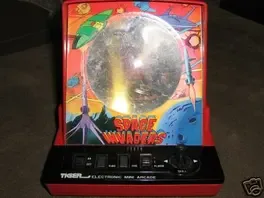
Tabletop LCD port of Space Invaders released in 1981.
Arcade Legends: Space Invaders is a dedicated console that contains five ports of Taito arcade games: Space Invaders Phoenix Lunar Rescue Qix Colony 7
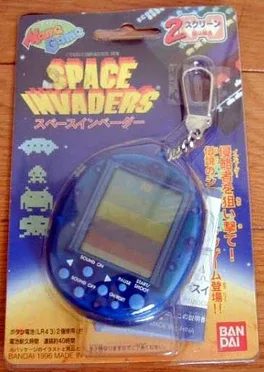
A port for handheld LCD devices.
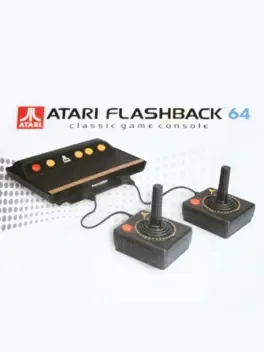
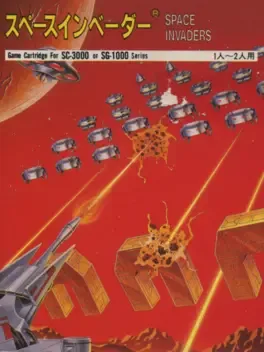
The SG-1000 port of Space Invaders.
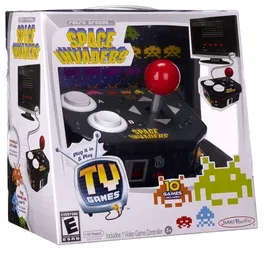
Retro Arcade: Space Invaders is a 10-in-1 Plug It In & Play TV game system made by Jakks Pacific and developed by Code Mystics in 2011 three years after the Retro Arcade Feauring Pac-Man TV game. It contains ten Taito arcade games. Not to be confused with the preiviously released Radica Space Invaders Play TV legends joystick that has five Taito games. It includes: Space Invaders Bubble Bobble Tube-It Qix Birdie King Legend Of Kage Alpine Ski The Fairyland Story Chack 'n Pop Puzznic
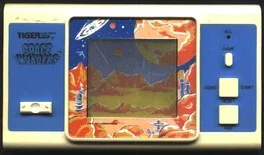
An LCD game port of Space Invaders released in 1984. It is part of the Large Screen line.
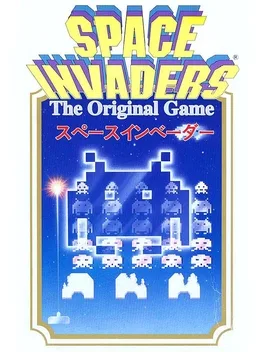
This version of Space Invaders is based on the 1994 arcade game Space Invaders DX but lacks the parody mode of that game. What remains is the classic mode that allows the player to choose the type of arcade cabinet (upright, black & white, etc.) as background to the action as well as the versus mode for two players. The versus mode is split-screen, each player trying to survive and eliminate more invaders than the opponent. The PC Engine (TurboGrafx) CD version offers an additional "cosmic versus" mode, where the background is composed of anime-style pictures of girls. They also appear in the "omake mode", which is a single-player variant with the same backgrounds.
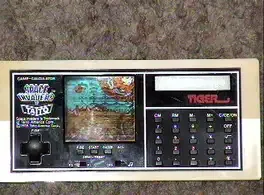
An LCD port of Space Invaders with a built-in calculator, released in 1982.
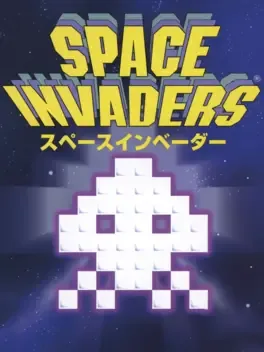
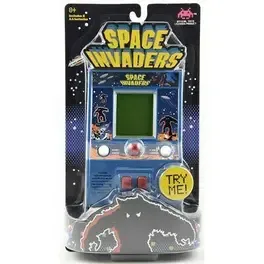
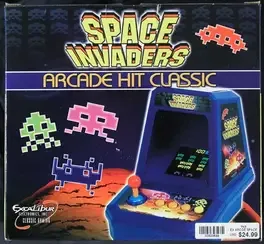
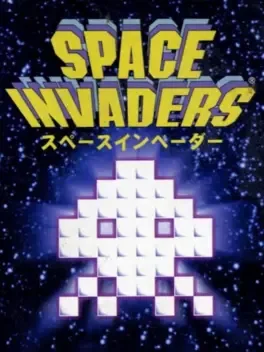
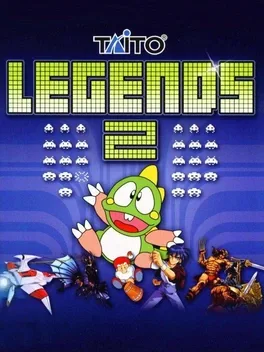
The PS2 version of Taito Legends 2 has a different set of games compared to the European version. The North American release replaced Puzzle Bobble 2 (Bust-A-Move 2: Arcade Edition) with Bust-A-Move Again.
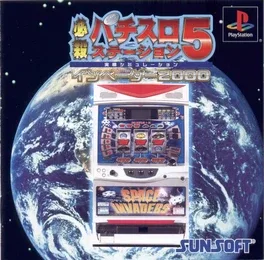
The pachinko machines are japanese slot gambling machines used for amusement and prizes. Although pachinko machines were originally strictly mechanical, modern pachinko machines are a cross between a pinball machine and a video slot machine. There are many types of pachinko machines and parlor regulations, but most of them conform to a similar style of play. Players can buy metal balls by either inserting either cash, a pre-paid card, or their member's card directly into the machine they want to use. At 4 yen per ball that's 250 balls for every 1000 yen. These balls are then shot into the machine from a ball tray with the purpose of attempting to win more balls. The pachinko machine has a digital slot machine on a large screen in the center of its layout, and the objective here is to get 3 numbers or symbols in a row for a jackpot. Hissatsu Pachi-Slot Station 5 - Invader 2000 is a pachinko slot machine simulator that features a pachinko slot machine (Invader 2000) made by Baltec.

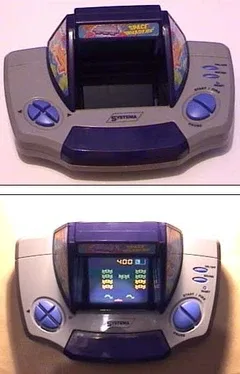
A port for handheld devices.